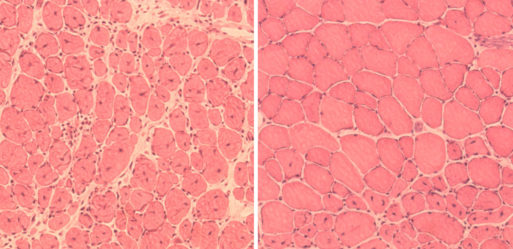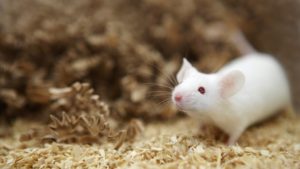
Muscle cells of mice (old right)
( Credit: www.livescience.com)
With the aftermath of the holiday season still sliding off of my shoulders, I vaguely recall the conversations of my older relatives around the dinner table. Each story began with the familiar phrase, “I remember when I was your age,” followed by a list of cautions targeted at my generation. Of course, nostalgia is an important part of any family dinner. But what if my relatives could actually return to my age after all? What if aging was optional?
Sound too good to be true? Recent studies show that the process of aging is reversible. An article published late last year on social news website Live Science states that scientists at the Salk Institute in La Jolla, California, have discovered a way to “turn back the clock on human and animal cells, making them look and behave like younger versions of themselves.”
Where can you get this magical product, you ask? Don’t run to the phone just yet. The method is not yet ready for trials on humans. Instead, scientists use lab mice.

Credit: www.pbs.org
“Obviously, mice are not humans and we know it will be much more complex to rejuvenate a person,” Izpisua Belmonte, a professor in Salk Institute’s Gene Expression Laboratory said. “But this study shows that aging is a very dynamic and plastic process, and therefore will be more amenable to therapeutic interventions than what we previously thought.”
Genes Are the Key
The science lies in our genes. By “turning on” four key genes, known as the Yamanaka factors, scientists can convert cells back to a state seen in human embryos. Cells that undergo this procedure are called induced pluripotent stem cells (iPS), which are capable of becoming any type of cell and dividing indefinitely.
Previous experiments with these factors almost always resulted in the development of cancer due to unregulated cell growth. But in the most recent study, scientists were able to stimulate Yamanaka factors for shorter periods of time, thus reducing the risk of cancer.
Scientists started with mice that have progeria, a disease which causes them to age faster than normal. They then genetically engineered the mice to turn on the Yamanaka factors. The treatments began when the mice were about eight weeks old, and continued in short sessions throughout their lifetimes.

Credit: www.rand.org
Eventually, researchers reported that the treated mice looked and acted younger than their untreated counterparts. They showed less curvature of their spines with age and their organ function improved. They also lived about 30 percent longer than the untreated mice. A research associate at the Salk Institute reported, “Mice treated with these reprogramming factors had tissues that were better looking…more healthy, and they didn’t accumulate the aging hallmarks.”
Although this treatment is not yet available for humans, scientists say that human cells stimulated with Yamanaka factors show reversal of signs of aging. This means that one day we might have the option to decide whether to “age gracefully” or not.

 Why Aging Might Become a Thing of the Past
Why Aging Might Become a Thing of the Past


 “Hand to Earth” by Andy Goldsworthy
“Hand to Earth” by Andy Goldsworthy
 Trans Remembrance Project Provides a Community of Grieving
Trans Remembrance Project Provides a Community of Grieving
 Caring for a Dying Loved One? Be Gentle With Yourself.
Caring for a Dying Loved One? Be Gentle With Yourself.














